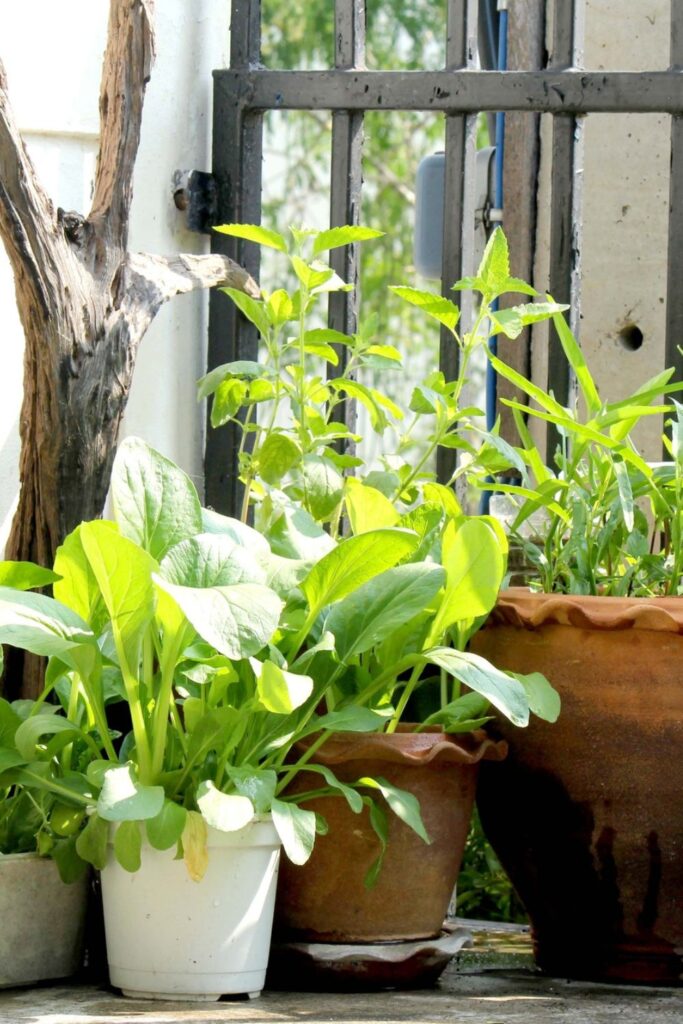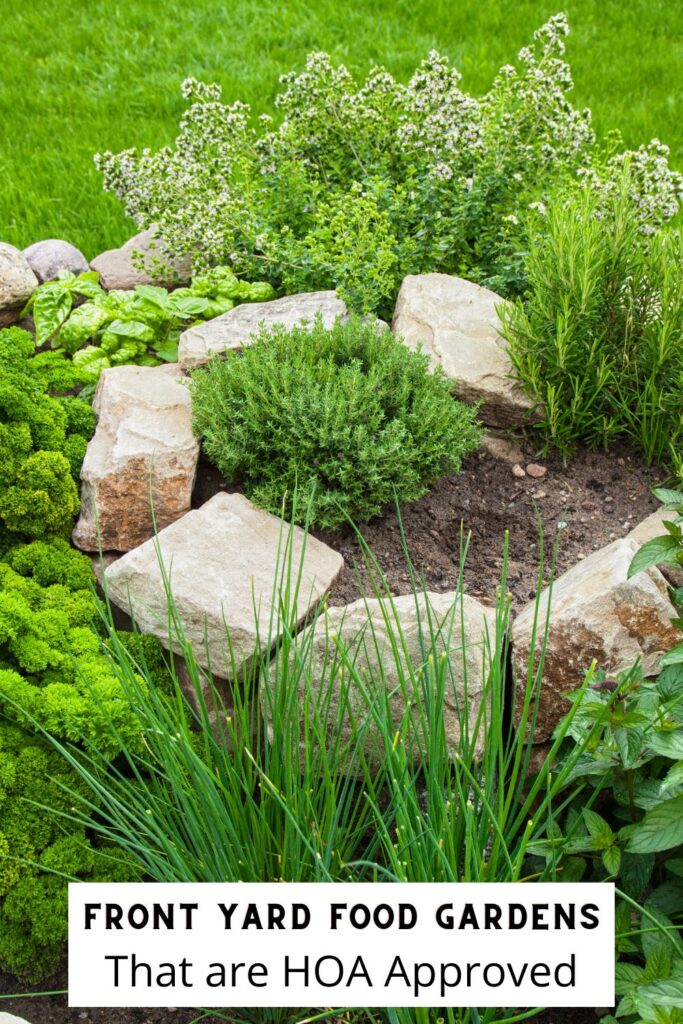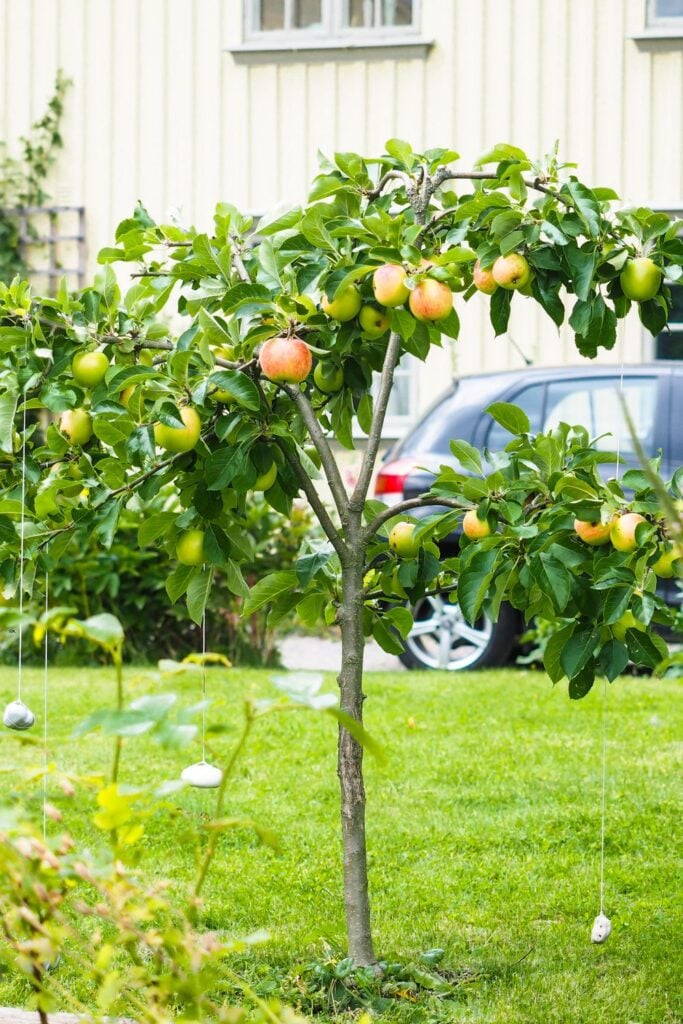In recent years, front-yard food gardens have emerged as a symbol of the growing green movement, reflecting a desire to connect with nature, promote sustainability, and beautify neighborhoods. However, for homeowners residing in communities governed by Homeowners Associations (HOAs), this newfound enthusiasm for gardening has sparked a heated battle.
HOAs, established to maintain uniformity and uphold property values, often impose strict guidelines on landscaping, leaving little room for creative expression. The clash between homeowners’ desire for eco-friendly front yard gardens and HOAs’ enforcement of landscaping restrictions has sparked a debate about personal property rights, community aesthetics, and the importance of environmental stewardship.
In this article, we delve into the complexities of growing a front-yard food garden, exploring the challenges, successes, and potential compromises in the battle of gardening within HOA communities.
Posts feature partner companies & may be sponsored. Post contains affiliate links & I will be compensated if you make a purchase after clicking on links. As an Amazon Associate I earn from qualifying purchases.

Table of Contents
Understanding Homeowners Associations (HOAs)
Homeowners Associations (HOAs) are private governing bodies found in many residential communities. Their primary role is to establish and enforce a set of rules and guidelines that govern the appearance, maintenance, and overall harmony of the neighborhood. Very few front-yard food gardening ideas fall within their specifications, although this article will provide a few tips further down.
HOAs are typically responsible for common area upkeep, and community amenities. They also often regulate aspects of homeowners’ properties, including landscaping and exterior design. In addition, they aim to maintain property values, ensure consistent neighborhood aesthetics, and promote a sense of community pride among residents.
Understanding the role and function of HOAs is crucial in order to comprehend the dynamics that come into play when it comes to front yard gardens and the potential conflicts they may trigger.
The Rise of Front Yard Gardens: A Green Movement
In recent years, food gardening has had a significant surge in popularity, fueled by a burgeoning green movement that emphasizes sustainable living and environmental consciousness. Homeowners across various communities are embracing the idea of transforming their front yards into green oases, where native plants, edible crops, and pollinator-friendly flowers coexist harmoniously.
This rising trend represents a collective effort to reconnect with nature, reduce carbon footprints, and contribute positively to the ecosystem.
By cultivating front-yard food gardens, individuals are not only beautifying their neighborhoods but also making a meaningful contribution to a more environmentally aware and ecologically balanced world. You can’t eat any more local than food from your very own yard.
HOA Restrictions on Landscaping: A Clash of Interests
HOA restrictions on landscaping have become a focal point of contention, resulting in a clash of interests between homeowners and the association.
While HOAs aim to maintain uniformity and property values, homeowners seek to exercise their rights to personalize and enhance their outdoor spaces. These restrictions often limit the types of plants, garden structures, and even the height of vegetation allowed in front yards, leaving little room for individual expression and eco-friendly initiatives.
The clash highlights the need for finding a delicate balance between maintaining community standards and accommodating the evolving green aspirations of homeowners, fostering a more inclusive and harmonious environment within HOA neighborhoods.
Navigating the Guidelines: HOA Rules on Front Yard Gardens
Navigating the guidelines of HOA rules on front yard gardens can be a challenging endeavor for homeowners seeking to embrace sustainable and creative landscaping.
Understanding the specific guidelines, communicating with the HOA, and exploring alternative landscaping solutions are essential to finding common ground.
By fostering open dialogue and promoting flexibility within the guidelines, homeowners and HOAs can work together to strike a balance that allows for beautiful, eco-friendly front yard food gardens while respecting the collective interests of the community.
Legal Rights and Limitations of Homeowners in HOAs
The legal rights and limitations of homeowners in HOAs play a pivotal role in shaping the landscape of gardening battles. Homeowners within HOAs are bound by the covenants, conditions, and restrictions (CC&Rs) that govern the community. These CC&Rs may include specific clauses related to landscaping, dictating what is permissible and what is not.
Understanding these legal boundaries empowers homeowners to make informed decisions regarding their front yard gardens. While some HOAs may have rigid restrictions, homeowners still retain certain rights to advocate for changes, request variances, or engage in community discussions to address concerns.
Striking a balance between individual property rights and communal standards requires a clear understanding of the legal framework within HOAs, enabling homeowners to navigate the complexities of front yard gardening within their community’s established guidelines. If you haven’t already, make sure to read your HOA’s covenants thoroughly so you know exactly what rules you are expected to follow.

✯Don’t want to miss the next post?✯
Follow Turning the Clock Back on Facebook | Twitter | Pinterest
Or join the private Facebook group for simple tips on going green!
HOAs and Property Values: Debunking Misconceptions
HOAs and their impact on property values have been the subject of various misconceptions. While some homeowners may fear that front yard gardens could lower property values due to concerns about inconsistent aesthetics, research suggests otherwise. In fact, well-maintained and thoughtfully designed front yard gardens can enhance curb appeal and contribute to a more attractive neighborhood, positively affecting property values.
By debunking these misconceptions, homeowners can foster a greater appreciation for the value of sustainable landscaping practices and demonstrate that front yard gardens can be a win-win for both individual expression and community harmony.
Creative Front Yard Food Landscaping Ideas within HOA Guidelines
Want to grow food in your front yard but not have your HOA knocking on your door? Here are a few font yard food landscaping ideas that you might want to try. (Before planting or landscaping, make sure to read your HOA’s documents to be sure they don’t exclude the ideas below)
- Raised Vegetable Beds: Create attractive, well-designed vegetable beds in your front yard. These raised beds can be made using aesthetically pleasing materials, such as wood or stone, and can accommodate a variety of vegetables, herbs, and edible flowers, all while keeping the garden neatly contained and within most HOA guidelines.
- Fruit Trees: Plant fruit trees strategically in your front yard, adhering to HOA regulations on spacing and placement. Compact fruit tree varieties like dwarf apple, pear, or citrus trees can thrive in smaller spaces and provide a beautiful and productive addition to your landscape.
- Herb Spiral: Build a herb spiral, a space-saving and visually appealing way to grow various herbs with different sunlight and moisture requirements. The spiral design allows for efficient use of space and brings a unique touch to your front yard garden while staying within HOA limits.
- Berry Bushes: Incorporate berry bushes, such as blueberries, raspberries, or blackberries, into your front yard garden. These bushes can be cultivated in containers or raised beds, adding both beauty and delicious homegrown fruit while complying with most HOA guidelines.
- Edible Ornamentals: Select edible ornamental plants that blend seamlessly with traditional landscaping. Mix colorful vegetables like rainbow chard, purple kale, or bright bell peppers with flowering plants like nasturtiums, pansies, calendula, or other edible flowers. This thoughtful combination ensures that your front yard remains visually appealing and productive while adhering to HOA requirements.

Community Harmony: Communication and Compromise
Community harmony in the context of front yard gardens within HOAs can be achieved through effective communication and a willingness to compromise. Homeowners and the HOA board should engage in open dialogue, fostering an atmosphere of understanding and respect for diverse perspectives.
By actively listening to each other’s concerns and exploring creative solutions, such as designated gardening areas or amended guidelines, both parties can work together to strike a balance between individual preferences and collective interests.
Emphasizing cooperation and flexibility enables the community to embrace front yard gardens harmoniously, fostering a sense of unity and shared responsibility for the neighborhood’s well-being.
Looking Ahead: Shaping HOA Policies for Sustainable Landscaping
Shaping HOA policies for sustainable landscaping is an essential step towards a greener and more environmentally conscious future. By reassessing current guidelines and incorporating eco-friendly practices, HOAs can promote the use of native plants, rainwater harvesting, and water-efficient irrigation systems.
Encouraging front yard gardens that support pollinators and wildlife while adhering to aesthetics can enhance community well-being. Collaborating with landscape professionals and seeking input from homeowners will enable HOAs to create progressive policies that embrace sustainability, align with evolving green initiatives, and set an inspiring example for other communities to follow.

Action Items for Homeowners
Here are 5 actionable steps homeowners can take to educate their HOA on the importance of sustainable landscaping:
- Research and Compile Information: Gather well-researched data and case studies that showcase the benefits of sustainable landscaping. This information can include studies on the positive impact of native plants on biodiversity, water conservation, and the potential for increased property values.
- Organize Informative Presentations: Schedule presentations or meetings with the HOA board and members to discuss the importance of sustainable landscaping. Utilize visual aids, images, and examples to illustrate the potential beauty and environmental benefits of front yard gardens designed with sustainable principles in mind.
- Identify Local Success Stories: Highlight successful sustainable landscaping initiatives in nearby neighborhoods or other HOAs. Sharing these local success stories can help demonstrate how other communities have embraced and benefitted from eco-friendly landscaping practices.
- Propose Pilot Projects: Suggest starting small pilot projects within the community to showcase the possibilities of sustainable front yard gardens. These projects can serve as tangible examples of how sustainable landscaping can coexist harmoniously with existing guidelines.
- Collaborate with Landscape Experts: Seek support from local horticulturists, landscape architects, or sustainability experts to provide professional insights and advice on sustainable landscaping practices. Their expertise can add credibility and authority to the importance of integrating green initiatives into the community’s landscaping guidelines.
In Conclusion
Front yard gardens can be both beautiful and beneficial, but they need to be implemented in a way that is respectful of HOA regulations. By emphasizing cooperation, collaboration, and creative solutions, homeowners and HOAs can work together to find the best possible balance between individual preferences and collective interests. For more information on how to integrate food gardens into your front yard, check out my post on foodscaping for a few tips.

Diane is a professional blogger and nationally certified pharmacy technician at Good Pill Pharmacy. She earned her BS in Microbiology at the University of New Hampshire and has worked in cancer research, academics, and biotechnology. Concern over the growing incidence of human disease and the birth of her children led her to begin living a more natural life. She quickly realized that the information she was learning along the way could be beneficial to many others and started blogging and freelance writing to share this knowledge with others. Learn more about her HERE.
